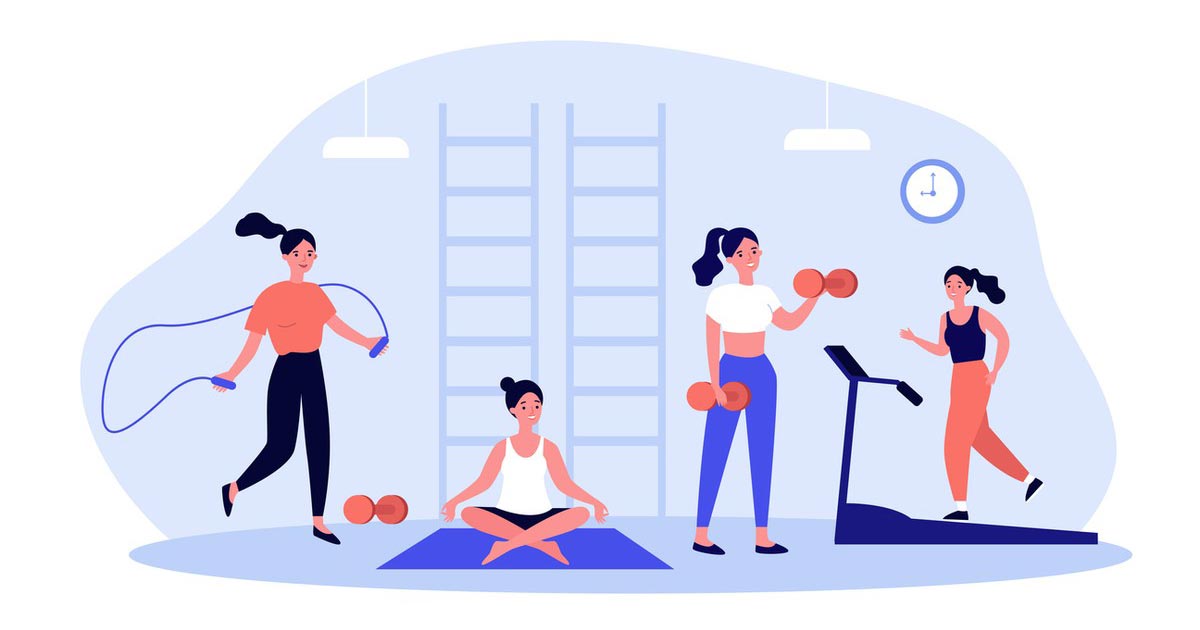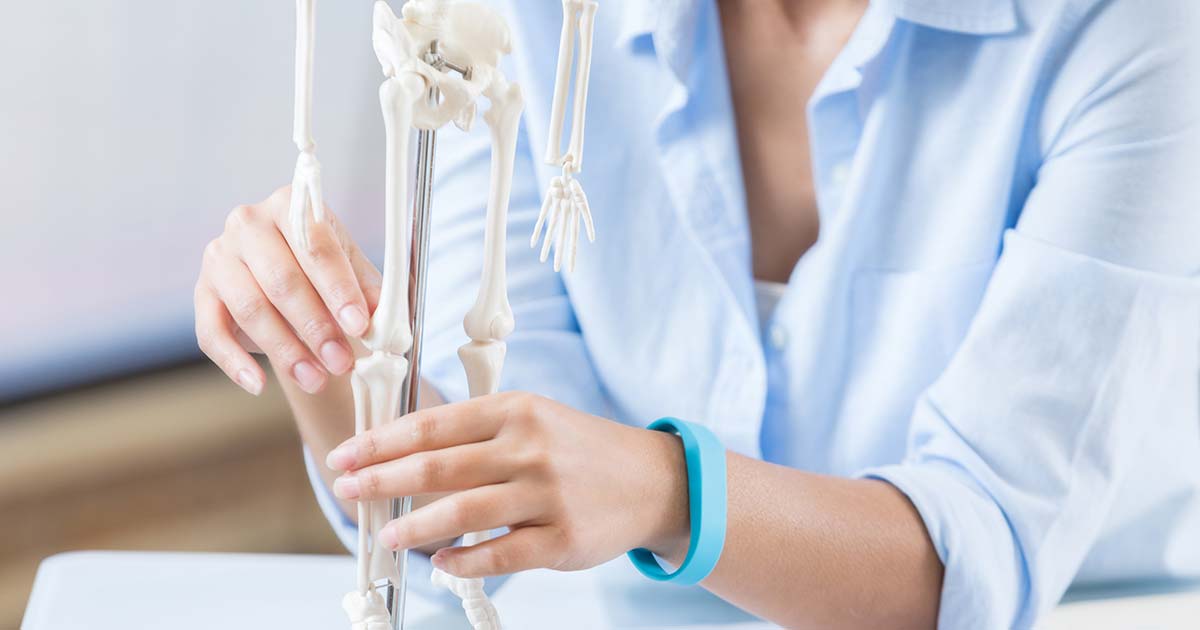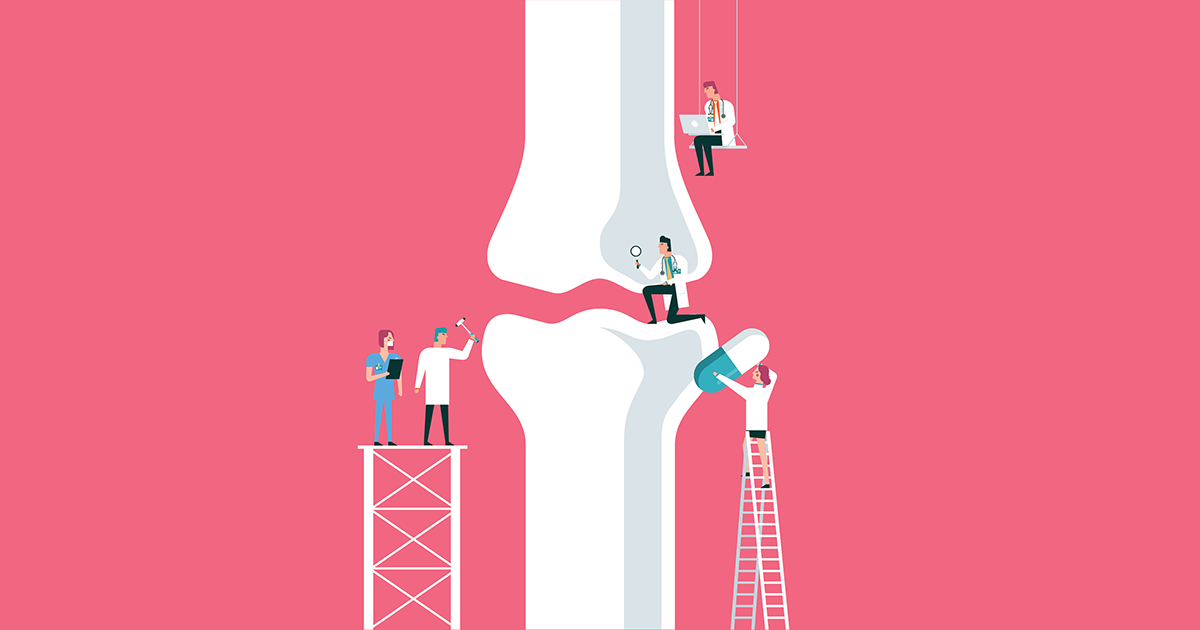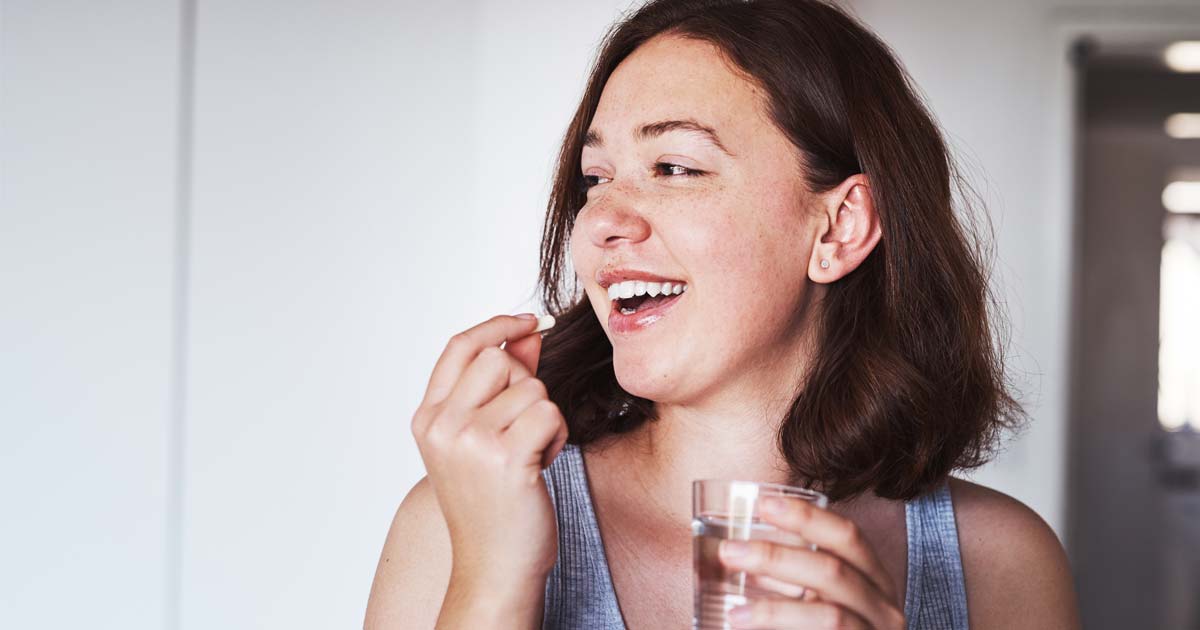How Exercise Can Help You Build Better Bones
Advice to improve your movement, fitness, and overall health from the world's #1 in orthopedics.
Exercise is an important part of the overall strategy for improving the health of your bones. Even though we think of bones as solid, rocklike structures, they’re actually living tissue that is constantly changing. Peak bone mass usually occurs by the age of 25 and then slowly declines over time. Bone loss accelerates during the first several years following menopause.

The foods we eat, the amount of physical activity we perform and various lifestyle and genetic factors contribute to bone health. For bones to be their best, in addition to exercise, they also need appropriate nutrition and adequate levels of estrogen, calcium intake and vitamin D.
If you have been diagnosed with osteoporosis or osteopenia, check with your physician before starting any exercise program.
Start by Improving Posture and Body Mechanics
How we work, play, sit and move can determine the stress placed on our spine. Viewed from the side, the spine is shaped like an S-curve. It is ten times stronger when these natural curves are maintained. Good posture and body mechanics can lessen or prevent back pain and protect your spine against fracture. (But if you’ve been diagnosed with osteoporosis, it is critically important to treat the condition, if your doctor advises it.)
General Posture Tips
- When standing or sitting, imagine a string on the top of your head being pulled up.
- Don’t let your stomach muscles sag. A strong core is the key to maintaining good posture.
- Maintain a normal (not flat or exaggerated) curve in your low back.
Posture When Sitting
- Don’t sit or stay in the same position for prolonged periods of time.
- Sit in a firm, straight-back chair with your hips all the way back.
- Use a lumbar roll (or a pillow or rolled-up towel) to maintain the natural curve in your low back, if it’s comfortable for you.
- Avoid sticking your neck out and keep your screen at eye level.
- To get out of a chair, slide forward without slouching and then stand up.
Posture When Moving or Lifting
- Keep a flat back.
- Use your legs when you lift even the lightest object. Keep a wide base of support. Squat down, keeping your chest upright, then lift/stand up.
- Avoid forward bending. If you must lean forward, bend where your legs meet your trunk, not at your waist.
- When lifting, hold objects close to you and avoid twisting.
It requires lots of practice before new ways of performing daily tasks become a habit. But the payoff is long-term back health. Start off with a few changes. Make an effort to be aware of your movements and protect the spine.
Focus on Flexibility
Much of our day is spent sitting or bending. This can tighten some muscles and put stress on the spine. As part of an overall program of stretching, it’s important to develop good flexibility in your back, hamstrings (the back of your thigh), hip flexors (the front of your thigh) and pectoral (chest) muscles.
Avoid forward-bending exercises, which can put stress on the bones and discs of the spine. Stretch the muscles to a point of tension, not pain, and hold the stretch for 15 to 30 seconds. Do this at least three to five times daily or as directed by a healthcare professional.
Add Strength Training
Strength training is probably one of the most important things you can do to build or maintain strong bones. To get the best results, make these techniques part of your routine:
- Work on a variety of muscle groups, including arms, legs, shoulders and back, three times per week, performing eight to 10 repetitions of each exercise.
- Gradually increase resistance (meaning use heavier weights) as your muscles become stronger, instead of cruising through a workout that has become easy.
- Focus on increasing bone density in the spine by doing standing and upper body exercises.
- Have an exercise professional design a well-balanced strength program for you involving major muscle groups.
- Learn proper exercises for the upper/lower back and abdominals to give you strength for good posture.
- Stay consistent, as injuries often happen when returning to exercise after a break.
Increase Weightbearing Exercise
Each time we step, jump, run or balance on part of our body, the impact causes compressive force on the bone, which encourages bone building. That’s why it’s important to participate in regular weight-bearing exercise that is appropriate for your fitness level and current bone health. For example, very fast walking, uphill walking, stair-stepping, jump rope or jumping activities, high-impact aerobics, jogging, dancing, soccer, tennis, squash and basketball can all be good exercise choices for bone-building. High impact forces and a variety of movement patterns cause a stronger bone response. However, your strength, heart health and bone integrity must be adequate for safe exercise. Your healthcare provider can tell you what’s safe and effective for you.
Strength training exercises done standing (or when balancing your weight on a leg or hand) are also an important part of a weightbearing exercise program.
Try Balance Training
Good levels of strength and flexibility guarantee that you’ll keep your balance more easily. To help prevent falls and protect your bones, activities that require balance are also good to practice. Many forms of dance, yoga and martial arts training (including tai chi) can promote good balance.
A simple exercise: Practice standing on one foot for 30 seconds. Repeat with the other leg. When you can do this easily, try it with your eyes closed or while moving the "air leg" forward and back or out and in. There are all kinds of balance games and activities you can do. Just remember to progress gradually and stand near something you can grab onto if you need a balance check.
Exercise can boost bone mass in adolescents and young adults. After the mid-30s, success means keeping the bone you have (or slowing the rate of bone loss). Whatever your age, exercise is good medicine for your body and your bones.
Published 10/15/2021





